2012 Poetry Day
An Afternoon of Mathematical Poetry
Saturday, July 28, 5:30 – 7:30pm, Kaplan Concert Hall Auditorium
Newton's binomial is as beautiful as Venus de Milo.
What happens is that few people notice it.
-Fernando Pessoa (as Álvaro de Campos)
translated from the Portuguese by Francisco Craveiro
Coordinated by Sarah Glaz, professor of mathematics at the University of Connecticut and poet, this reading will feature poetry with strong links to mathematics.
The Program
Representing a range of mathematical poetry from traditional to multimedia and from lyrical to visual, ten poets will read selections from their work:
Stephanie Strickland
from: Striving All My Life, Grothendieck, Mathematics: Galois, Numberbody, To Gödel, and 33 Symmetry Axes x 40 Orthogonal Triples; or, Free Will, Revisited.
Kaz Maslanka
from: The Monastic Path, Temptation, Prometheus’s Epistle to Job, and other poems.
Alice Major
from: One, Nine, In the City of the Poor, The Number Line, Locate the Site, and a selection from The Set of All Gods.
Geof Huth
from: 231. Innumerable Thoughts, Algebraic Poem # 3, Phyllotaxis 001, and other poems.
Philip Holmes
from: Gaps, Minding One’s Business, Fractions from the Still, and other poems.
JoAnne Growney
from: Fool’s Gold, More and More Primes, Pigeons in Their Pigeonholes, Snowballs and Squares, and Portrait of a Mathematician.
Emily Grosholz
from: In Praise of Fractals, Technical Divination, Love’s Shadow, Among Cosmologists, and Trying to Describe the Reals in Cambridge.
Marion Deutsche Cohen
from: Someone Wrote a Book Called “The Joy of Math,” When What Worked for Years Suddenly Plays, It’s a Kind of Transitive Law When, (Math Research, Age 4), and Eureka.
Tatiana Bonch-Osmolovskaya
from: Alphabetic Mutability, By the Father’s Order Sent to the School of Mathematics I Perceive the Beginning of Transcendence, One, Two, and Sandglass.
Sarah Glaz
from: Late Afternoon at the Workshop on Commutative Rings, I Am a Number, I Am a Number (II), and other poems
Late Additions and Open Microphone Reading
Carol Dorf: "Dear Ivar" (read by JoAnne Growney)
Deanna Nikaido: "Love by Numbers"
Janice Dykacz: "Chi and the Moebius Strip"
Suzie Garfield: "The Princess and All the P's"
Barry Cipra: "Loopy Love"
About the Coordinator and the Invited Poets
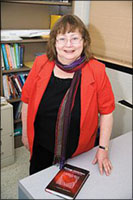 Sarah Glaz is a professor of mathematics at the University of Connecticut specializing in the mathematical research area of commutative algebra. She also has a lifelong interest in poetry and enjoys getting involved in almost any kind of poetry related activity. Sarah translated Romanian poetry, wrote articles on the connections between mathematics and poetry, experimented with poetry in the mathematics classroom, and coedited with JoAnne Growney the poetry anthology, Strange Attractors: Poems of Love and Mathematics (AK Peters, 2008). Sarah's poetry appeared or is forthcoming in: Ibis Review, Convergence, The American Math Monthly, The Ghazal Page, Journal of Humanistic Mathematics, Recursive Angel, Talking Writing, and other periodicals. She is an associate editor for Journal of Mathematics and the Arts. Additional information about her publications and related activities appears at: http://www.math.uconn.edu/~glaz/
Sarah Glaz is a professor of mathematics at the University of Connecticut specializing in the mathematical research area of commutative algebra. She also has a lifelong interest in poetry and enjoys getting involved in almost any kind of poetry related activity. Sarah translated Romanian poetry, wrote articles on the connections between mathematics and poetry, experimented with poetry in the mathematics classroom, and coedited with JoAnne Growney the poetry anthology, Strange Attractors: Poems of Love and Mathematics (AK Peters, 2008). Sarah's poetry appeared or is forthcoming in: Ibis Review, Convergence, The American Math Monthly, The Ghazal Page, Journal of Humanistic Mathematics, Recursive Angel, Talking Writing, and other periodicals. She is an associate editor for Journal of Mathematics and the Arts. Additional information about her publications and related activities appears at: http://www.math.uconn.edu/~glaz/
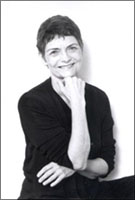 Stephanie Strickland is a print and hypermedia poet who studied mathematics at Harvard and enjoys reading (mostly about) it still. Her sixth book, Zone : Zero (book + CD), includes the interactive digital poem, slippingglimpse, in which text is mapped to strange attractors of so-called ‘chreod’ wave patterns in Paul Ryan’s videos. Other digital work includes V: Vniverse, Ballad of Sand and Harry Soot, and a poetry generator written with Nick Montfort, Sea and Spar Between. Her essays appear in Leonardo Electronic Almanac, ebr, Isotope, and volumes from MIT Press and Intellect Press, Ltd. A member of the Board of Directors of the Electronic Literature Organization, she edited the first volume of the Electronic Literature Collection with Kate Hayles, Nick Montfort, and Scott Rettberg. Additional information appears at: http://stephaniestrickland.com/
Stephanie Strickland is a print and hypermedia poet who studied mathematics at Harvard and enjoys reading (mostly about) it still. Her sixth book, Zone : Zero (book + CD), includes the interactive digital poem, slippingglimpse, in which text is mapped to strange attractors of so-called ‘chreod’ wave patterns in Paul Ryan’s videos. Other digital work includes V: Vniverse, Ballad of Sand and Harry Soot, and a poetry generator written with Nick Montfort, Sea and Spar Between. Her essays appear in Leonardo Electronic Almanac, ebr, Isotope, and volumes from MIT Press and Intellect Press, Ltd. A member of the Board of Directors of the Electronic Literature Organization, she edited the first volume of the Electronic Literature Collection with Kate Hayles, Nick Montfort, and Scott Rettberg. Additional information appears at: http://stephaniestrickland.com/
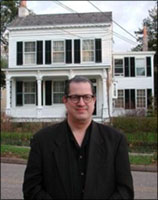 Kaz Maslanka received a BFA in sculpture from Wichita State University, where he also studied music, mathematics and physics. He has been pioneering mathematical poetry for over thirty years and was nominated for a pushcart prize in poetry. His polyasthetic work maintains an international presence through exhibitions around the world as well as through his award winning blog, Mathematical Poetry. Kaz lives in San Diego, California where he works both as an artist and as an engineering group leader designing parametric CAD models for cutting edge aerospace technology. He is on the board of directors of the San Diego based Sonic Arts Studio, and serves on the advisory boards of the Bronowski Art and Science Forum and the project, DNA of Creativity, sponsored by San Diego Visual Arts Network.
Kaz Maslanka received a BFA in sculpture from Wichita State University, where he also studied music, mathematics and physics. He has been pioneering mathematical poetry for over thirty years and was nominated for a pushcart prize in poetry. His polyasthetic work maintains an international presence through exhibitions around the world as well as through his award winning blog, Mathematical Poetry. Kaz lives in San Diego, California where he works both as an artist and as an engineering group leader designing parametric CAD models for cutting edge aerospace technology. He is on the board of directors of the San Diego based Sonic Arts Studio, and serves on the advisory boards of the Bronowski Art and Science Forum and the project, DNA of Creativity, sponsored by San Diego Visual Arts Network.
 Alice Major has published nine highly praised poetry collections and won the Pat Lowther Award, given annually for best book of poetry by a Canadian woman. Her newest book is a collection of essays, Intersecting Sets: A Poet Looks at Science (University of Alberta Press, 2011). Her interest in mathematics began at the age of twelve, when she was introduced to non-Euclidean geometry in one of Martin Gardner’s books. Ever since, like Percy Bysshe Shelley, she turns to math and science ‘to replenish my store of metaphor.’ She has been president of the League of Canadian Poets from 2000-2002, first poet laureate for her home city of Edmonton (in western Canada) from 2005-2007, and is the artistic director for the Edmonton Poetry Festival. Additional information is available at: http://www.alicemajor.com/
Alice Major has published nine highly praised poetry collections and won the Pat Lowther Award, given annually for best book of poetry by a Canadian woman. Her newest book is a collection of essays, Intersecting Sets: A Poet Looks at Science (University of Alberta Press, 2011). Her interest in mathematics began at the age of twelve, when she was introduced to non-Euclidean geometry in one of Martin Gardner’s books. Ever since, like Percy Bysshe Shelley, she turns to math and science ‘to replenish my store of metaphor.’ She has been president of the League of Canadian Poets from 2000-2002, first poet laureate for her home city of Edmonton (in western Canada) from 2005-2007, and is the artistic director for the Edmonton Poetry Festival. Additional information is available at: http://www.alicemajor.com/
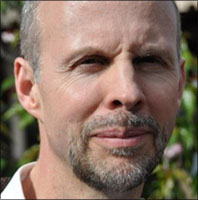 Geof Huth's poetry consists of one-word poems, poems written in unintelligible scripts, poems painted onto canvas or assembled within boxes, poems spoken or sung and audio or video recorded during the moments of their creation, poems created within nature and left to disappear back into it, and even syntactic text separated into lines. His mathematical poems are usually algebraic in construction and are more visual than syntactic. He writes frequently about poetry, visual and otherwise, in various literary venues, including his blog, dbqp: visualizing poetics. His most recent book of poetry, Aution Caution (Redfoxpress, Ireland, 2011), consists of a set of found and manipulated photo- poems. His previous book, ntst: the collected pwoermds of geof huth (If p then q, Manchester, England, 2010), is a collection of 775 one-word poems.
Geof Huth's poetry consists of one-word poems, poems written in unintelligible scripts, poems painted onto canvas or assembled within boxes, poems spoken or sung and audio or video recorded during the moments of their creation, poems created within nature and left to disappear back into it, and even syntactic text separated into lines. His mathematical poems are usually algebraic in construction and are more visual than syntactic. He writes frequently about poetry, visual and otherwise, in various literary venues, including his blog, dbqp: visualizing poetics. His most recent book of poetry, Aution Caution (Redfoxpress, Ireland, 2011), consists of a set of found and manipulated photo- poems. His previous book, ntst: the collected pwoermds of geof huth (If p then q, Manchester, England, 2010), is a collection of 775 one-word poems.
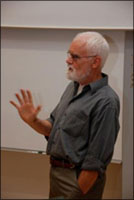 Philip Holmes is professor of applied and computational mathematics and mechanical and aerospace engineering and a member of the Neuroscience Institute at Princeton University. He studied engineering at Oxford and Southampton Universities, UK, and taught at Cornell from 1977-1994. He works on nonlinear dynamical systems and is currently collaborating with biomechanicians and neuroscientists. Philip has published four poetry collections, including, The Green Road (1986) and Lighting the Steps (2002), all with Anvil Press (London), and, with Florin Diacu, Celestial Encounters - an historical account of the origins of chaos theory. He is a member of the American Academy of Arts and Sciences and of the Hungarian Academy of Sciences, and a Fellow of the American Physical Society and the Society for Industrial and Applied Mathematics. Additional information appears at: http://www.princeton.edu/mae/people/faculty/holmes/
Philip Holmes is professor of applied and computational mathematics and mechanical and aerospace engineering and a member of the Neuroscience Institute at Princeton University. He studied engineering at Oxford and Southampton Universities, UK, and taught at Cornell from 1977-1994. He works on nonlinear dynamical systems and is currently collaborating with biomechanicians and neuroscientists. Philip has published four poetry collections, including, The Green Road (1986) and Lighting the Steps (2002), all with Anvil Press (London), and, with Florin Diacu, Celestial Encounters - an historical account of the origins of chaos theory. He is a member of the American Academy of Arts and Sciences and of the Hungarian Academy of Sciences, and a Fellow of the American Physical Society and the Society for Industrial and Applied Mathematics. Additional information appears at: http://www.princeton.edu/mae/people/faculty/holmes/
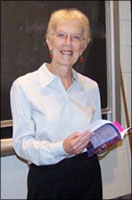 During her first career as a mathematics professor at Pennsylvania’s Bloomsburg University, JoAnne Growney brought the arts, particularly poetry, into her classroom. Now she devotes her time to writing. Her recent poetry collections include Red Has No Reason (Plain View Press, 2010) and My Dance Is Mathematics (Paper Kite Press, 2006). Also she is author of several articles connecting poetry with mathematics and she produces a blog entitled Intersections -- Poetry with Mathematics; links to these various resources are available at http://joannegrowney.com/ . Additional activities include translations of Romanian poets and collaborative projects with visual artists, poets and mathematicians. In her current hometown of Silver Spring, MD JoAnne teaches an ongoing poetry workshop for mental health clients. With her pad and pen she roams about seeking or constructing new poems.
During her first career as a mathematics professor at Pennsylvania’s Bloomsburg University, JoAnne Growney brought the arts, particularly poetry, into her classroom. Now she devotes her time to writing. Her recent poetry collections include Red Has No Reason (Plain View Press, 2010) and My Dance Is Mathematics (Paper Kite Press, 2006). Also she is author of several articles connecting poetry with mathematics and she produces a blog entitled Intersections -- Poetry with Mathematics; links to these various resources are available at http://joannegrowney.com/ . Additional activities include translations of Romanian poets and collaborative projects with visual artists, poets and mathematicians. In her current hometown of Silver Spring, MD JoAnne teaches an ongoing poetry workshop for mental health clients. With her pad and pen she roams about seeking or constructing new poems.
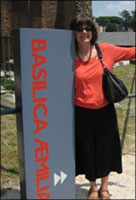 Emily Grosholz is the author of five books of poetry, most recently The Abacus of Years (David R. Godine Publisher, 2001), and Feuilles; Huit Poèmes: Edition Bilingue Français-Anglais, with Farhad Ostovani (William Blake and Co, 2009). She is professor of philosophy at the Pennsylvania State University and a member of the University of Paris Denis Diderot research group REHSEIS/SPHERE. Emily has been an advisory editor for the Hudson Review for twenty-five years, and joined the editorial advisory board of the Journal of Humanistic Mathematics a year ago. She studied mathematics at the University of Chicago, and philosophy at Yale University, so that her research focuses on the history and philosophy of mathematics. She lives with her husband and children in State College, Pennsylvania. Additional information is available at: http://philosophy.la.psu.edu/faculty/profiles/grosholz.shtml
Emily Grosholz is the author of five books of poetry, most recently The Abacus of Years (David R. Godine Publisher, 2001), and Feuilles; Huit Poèmes: Edition Bilingue Français-Anglais, with Farhad Ostovani (William Blake and Co, 2009). She is professor of philosophy at the Pennsylvania State University and a member of the University of Paris Denis Diderot research group REHSEIS/SPHERE. Emily has been an advisory editor for the Hudson Review for twenty-five years, and joined the editorial advisory board of the Journal of Humanistic Mathematics a year ago. She studied mathematics at the University of Chicago, and philosophy at Yale University, so that her research focuses on the history and philosophy of mathematics. She lives with her husband and children in State College, Pennsylvania. Additional information is available at: http://philosophy.la.psu.edu/faculty/profiles/grosholz.shtml
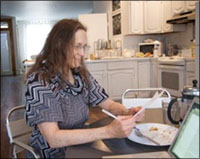 Writer and mathematician Marion Deutsche Cohen holds a PhD degree in mathematics from Wesleyan University and teaches at Arcadia University, where her course, Mathematics in Literature, attracts an arithmetic progression of students. Author of nineteen books of poetry and prose, Marion published in her first volume of poetry, The Weirdest Is the Sphere (Seven Woods Press, NY, 1979), a mathematical poem dating back to age seven. Her later mathematical poems, collected in her volume, Crossing the Equal Sign (Plain View Press, 2007), were inspired by her work on a problem in graph theory. She lives with her husband in Philadelphia, Pennsylvania, where in addition to poetry and mathematics, she enjoys food, thrift shop expeditions, and visits from her grown children and grandchildren. Samples of her work appear at: http://www.marioncohen.net/
Writer and mathematician Marion Deutsche Cohen holds a PhD degree in mathematics from Wesleyan University and teaches at Arcadia University, where her course, Mathematics in Literature, attracts an arithmetic progression of students. Author of nineteen books of poetry and prose, Marion published in her first volume of poetry, The Weirdest Is the Sphere (Seven Woods Press, NY, 1979), a mathematical poem dating back to age seven. Her later mathematical poems, collected in her volume, Crossing the Equal Sign (Plain View Press, 2007), were inspired by her work on a problem in graph theory. She lives with her husband in Philadelphia, Pennsylvania, where in addition to poetry and mathematics, she enjoys food, thrift shop expeditions, and visits from her grown children and grandchildren. Samples of her work appear at: http://www.marioncohen.net/
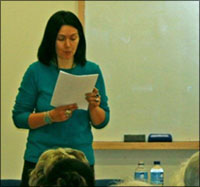 Born in former Soviet Union, Tatiana Bonch-Osmolovskaya studied philology at Moscow State Humanitarian University and physics and mathematics at Moscow Institute of Physics and Technology, where she also taught a course in combinatorial poetry. In 2011 she received a PhD degree from the University of New South Wales, Australia, in the area of contemporary Russian experimental poetry. Tatiana is author of six books of prose, poetry and translation, including, Introduction to the literature of formal restrictions (Bakhrakh-M, 2009), and a number of articles in literary and philological journals. She is a member of the Australia and New Zealand Slavists’ Association, and the Executive Board of the International Symmetry Association. Information on the literary events she organized as co-chair of Antipodes Association of Russian Literature in Australia is available at: http://antipodes.org.au/en.aboutAssociation.html
Born in former Soviet Union, Tatiana Bonch-Osmolovskaya studied philology at Moscow State Humanitarian University and physics and mathematics at Moscow Institute of Physics and Technology, where she also taught a course in combinatorial poetry. In 2011 she received a PhD degree from the University of New South Wales, Australia, in the area of contemporary Russian experimental poetry. Tatiana is author of six books of prose, poetry and translation, including, Introduction to the literature of formal restrictions (Bakhrakh-M, 2009), and a number of articles in literary and philological journals. She is a member of the Australia and New Zealand Slavists’ Association, and the Executive Board of the International Symmetry Association. Information on the literary events she organized as co-chair of Antipodes Association of Russian Literature in Australia is available at: http://antipodes.org.au/en.aboutAssociation.html